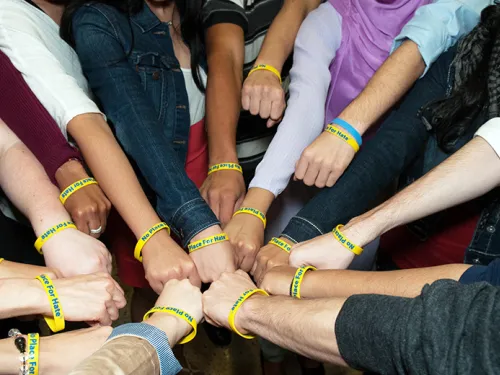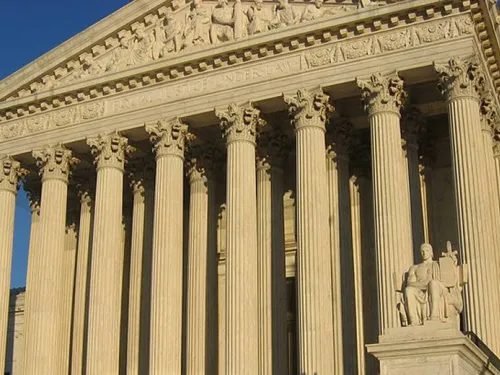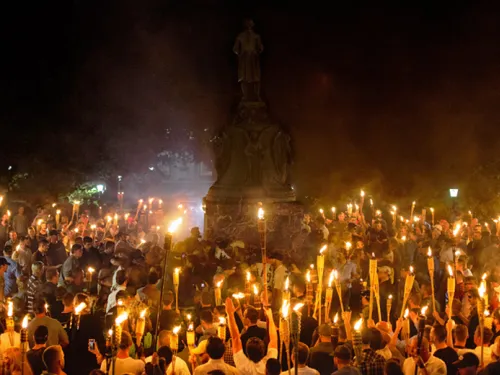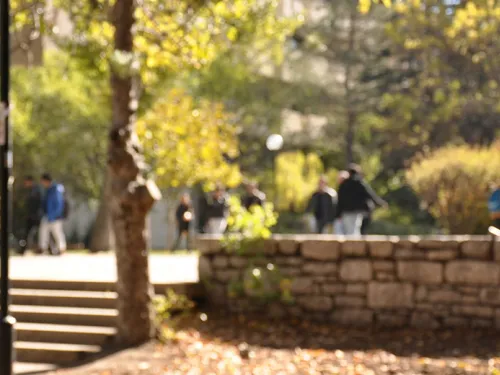Washington, D.C., Feb. 28, 2024: The Louis D. Brandeis Center for Human Rights Under Law and ADL (the Anti-Defamation League) today filed a complaint with the U.S. Department of Education’s Office for Civil Rights against the Berkeley Unified School District (BUSD) for failing to take action to end nonstop bullying and harassment of Jewish students by peers and teachers since Oct. 7. According to the complaint, Berkeley administrators have ignored parent reports and…
Search Results
58 Results
The Jewish community faced unthinkable tragedy on October 7th, when the terrorist group Hamas committed mass atrocities against thousands of Israelis, including murder, torture, dismemberment and rape. As the global Jewish community mourns our collective trauma, one could imagine a world in which Jewish students were comforted on campus with supportive words, candlelight vigils, and an understanding community mobilizing to support their needs. Instead, increasing numbers of Jewish students…
La ADL contabilizó 665 incidentes antiisraelíes en el último año académicoNueva York, NY, 13 de septiembre de 2023... Según un nuevo informe de la Liga Antidifamación (ADL), la reciente actividad antiisraelí en los campus universitarios de Estados Unidos se caracterizó por el vilipendio de los sionistas y las expresiones de apoyo a la violencia y a las organizaciones terroristas. En total, hubo 665 incidentes antiisraelíes…
ADL tallied 665 anti-Israel incidents in the last academic yearNew York, NY, September 13, 2023… Recent anti-Israel activity on U.S. college campuses was defined by the vilification of Zionists and expressions of support for violence and terrorist organizations according to a new report from ADL (Anti-Defamation League). In total, there were 665 anti-Israel incidents nationwide from June 2022 through May 2023. The annual report from the ADL Center on Extremism identifies a broad…
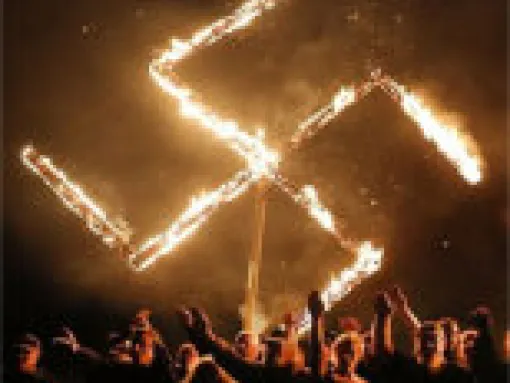
Neo-Nazis have adopted the Ku Klux Klan practice of symbolic burnings, substituting swastikas, othala and life runes, triskeles and the Celtic cross for the traditional cross burned by Klan members.
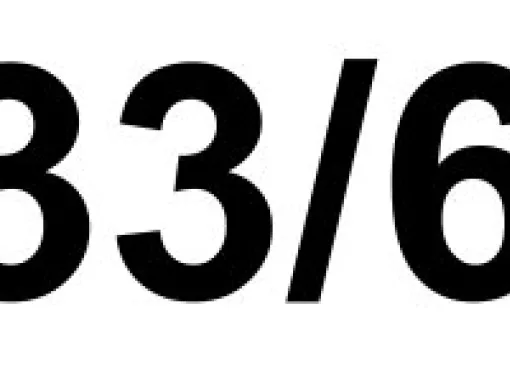
The number 33 is used by Ku Klux Klan adherents to signify the Ku Klux Klan. Since the 11th letter of the alphabet is K, three Ks signify "KKK" or the Ku Klux Klan. When using this reference, Klan members will frequently add the number 6 at the end, as in 33/6, because they think the Klan is currently in its sixth historical "era." Less commonly, some holdouts may still use the numeric code 33/5. Additional Images:

88 is a white supremacist numerical code for Heil Hitler. Read more about the meaning behind the numbers, as well as how it’s used in non-extremist forms.

AKIA is Ku Klux Klan shorthand for "A Klansman I Am." It is related to another Klan acronym, AYAK ("Are You A Klansman?"). These are among the many acronyms developed by the Second Ku Klux Klan that emerged in 1915. Although the Second Ku Klux Klan did not survive, much of its terminology and many of its rituals did, and later Klan groups freely used them. Additional Images:

AYAK is Ku Klux Klan shorthand for "Are You A Klansman?" It is related to another Klan acronym, AKIA ("A Klansman I Am"). These are among the many acronyms developed by the Second Ku Klux Klan that emerged in 1915. Although the Second Ku Klux Klan did not survive, much of its terminology and many of its rituals did, and later Klan groups have freely used them. Additional Images:

ALTERNATE NAMES: Ku Klux Klan, MIOAKGroup Status: Active (in that there are many active Ku Klux Klan groups)
For the past century, the primary symbol related to Ku Klux Klan groups (other than Klan robes themselves) is what Klan members may call the MIOAK (an acronym for "Mystic Insignia of a Klansman"). It is more commonly referred to as the "Blood Drop" Cross. It appears as a square white cross in black outline against a circular red background. In the middle of the cross is what appears…
ALTERNATE NAMES: Ku Klux Klan, MIOAK
Read more about Blood Drop Cross
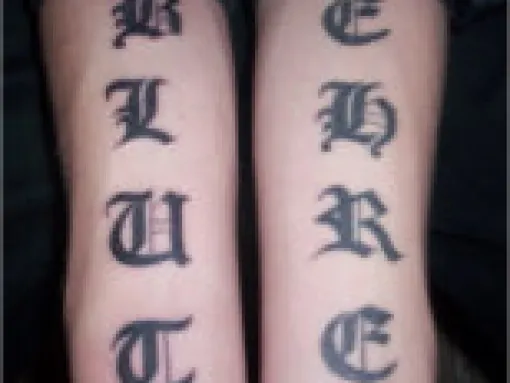
"Blut und Ehre" is a German phrase that translates into "Blood and Honor;" it was popularized by the Nazi Party (as a Hitler Youth slogan and elsewhere). Since World War II, this German phrase (and even more so for its English translation) has commonly been used by white supremacists in Europe, the United States, and elsewhere - most notably as the name of an international racist skinhead group. Additional Images:
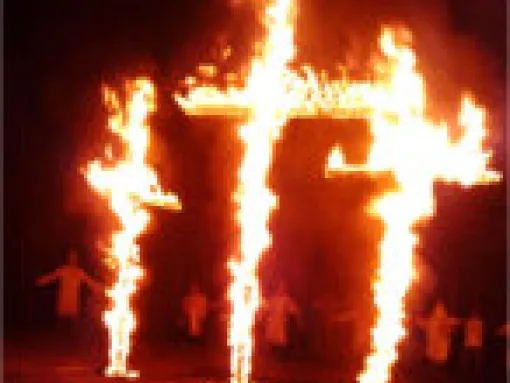
The image of the burning cross is one of the most potent hate symbols in the United States, popularized as a terror image by the Ku Klux Klan since the early 1900s. Cross-burnings (called "cross-lightings" by Ku Klux Klan groups, to make it seem as if they are not destroying a Christian cross) have long been used as a traditional symbol by Klan groups, used both in Klan rituals as well as in attempts to intimidate and terrorize victims of Klan groups. So widely associated with racial…
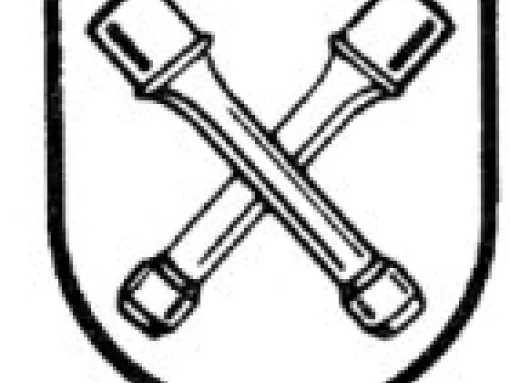
ALTERNATE NAMES: DirlewangerThe crossed grenade emblem signifies the Waffen SS unit most commonly known, after its commander, as the "Dirlewanger Brigade" (later, the 36th SS Division). Oskar Dirlewanger (1895-1945) was an SS officer involved in the Holocaust and anti-partisan actions in World War II, including the murderous suppression of the 1944 uprising of the Polish Home Army in Warsaw. Even within the Waffen SS, both Dirlewanger and his unit had a reputation for sadism,…
ALTERNATE NAMES: Dirlewanger
Read more about Crossed Grenades

ALTERNATE NAMES: For God, Race and NationFGRN is a Ku Klux Klan acronym for "For God, Race and Nation," a common Klan slogan. It is one of a number of slogans, codes and rituals created by the Second Ku Klux Klan in the early 20th century. That Klan did not survive, but many of its codes and rituals were adopted by later Klan groups. In acronym form, the slogan is used primarily as a Klan identifier, typically appended at the end of on-line messages and postings. Additional Images:
ALTERNATE NAMES: For God, Race and Nation
Read more about FGRN

It is common for white supremacists in the United States and elsewhere to use German words or phrases, or to create German-like equivalents of English words and phrases. This is most common among neo-Nazis and racist skinheads, but can be seen to some degree across all white supremacist movements. Some of the terms derive from the the Third Reich, while others are more modern in origin. Common examples include phrases such as "Weiss Macht" or "Weisser Macht" (White Power), "Weiss Junge" or …

ALTERNATE NAMES: Nazi SaluteThe Nazi or Hitler salute debuted in Nazi Germany in the 1930s as a way to pay homage to Adolf Hitler. It consists of raising an outstretched right arm with the palm down. In Nazi Germany, it was often accompanied by chanting or shouting "Heil Hitler" or "Sieg Heil." Since World War II, neo-Nazis and other white supremacists have continued to use the salute, making it the most common white supremacist hand sign in the world. Additional Images:
ALTERNATE NAMES: Nazi Salute
Read more about Hitler Salute (hand sign)
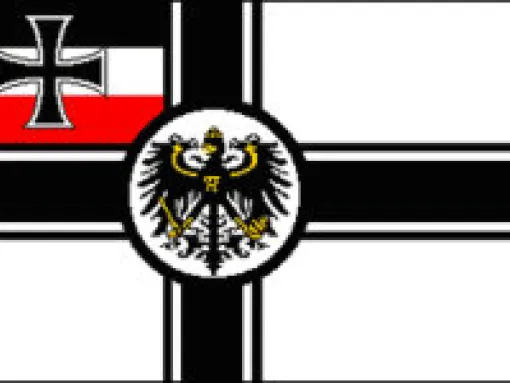
ALTERNATE NAMES: Imperial War Ensign, ReichskriegsflaggeBecause Germany has banned use of the swastika and other Nazi imagery, some German neo-Nazis use an older flag, taken from Imperial Germany, as a substitute for the Nazi flag. The imperial flag never originally had any racist or anti-Semitic meaning. Although most common in Germany, this usage of the imperial flag can also be found elsewhere in Europe and in the United States. Additional Images:
ALTERNATE NAMES: Imperial War Ensign, Reichskriegsflagge
Read more about Imperial German Flag
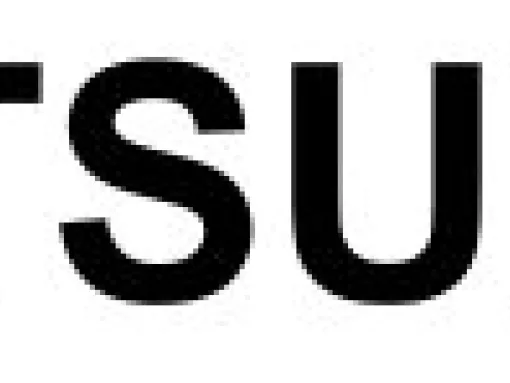
ITSUB is a Ku Klux Klan acronym for "In The Sacred Unfailing Being," a reference to God. It is one of many Klan acronyms created by the Second Ku Klux Klan that emerged in 1915. That Klan did not survive, but subsequent Ku Klux Klan groups continued many of its rituals and codes. Today, ITSUB has no real meaning or particular purpose and is typically used by Klan group members in on-line messages or posts solely as a way to identify themselves with the Ku Klux Klan. This has been the fate of a…

KABARK is a Ku Klux Klan acronym for "Konstantly Applied By All Regular Klansmen." It is one of many acronyms and codes developed by the Second Ku Klux Klan in the early 20th century. The Second Ku Klux Klan did not survive, but later Klan groups continued many of its codes and rituals. Today, KABARK is essentially meaningless and only used as a "sign off" in on-line messages by Klan group members, along with several other similar archaic acronyms. Additional Images:

KIGY is Ku Klux Klan shorthand for "Klansman I Greet You." It is one of many acronyms developed by the Second Ku Klux Klan that emerged in 1915. Although the Second Ku Klux Klan did not survive, much of its terminology and many of its rituals did, and later Klan groups freely used them. Additional Images:
